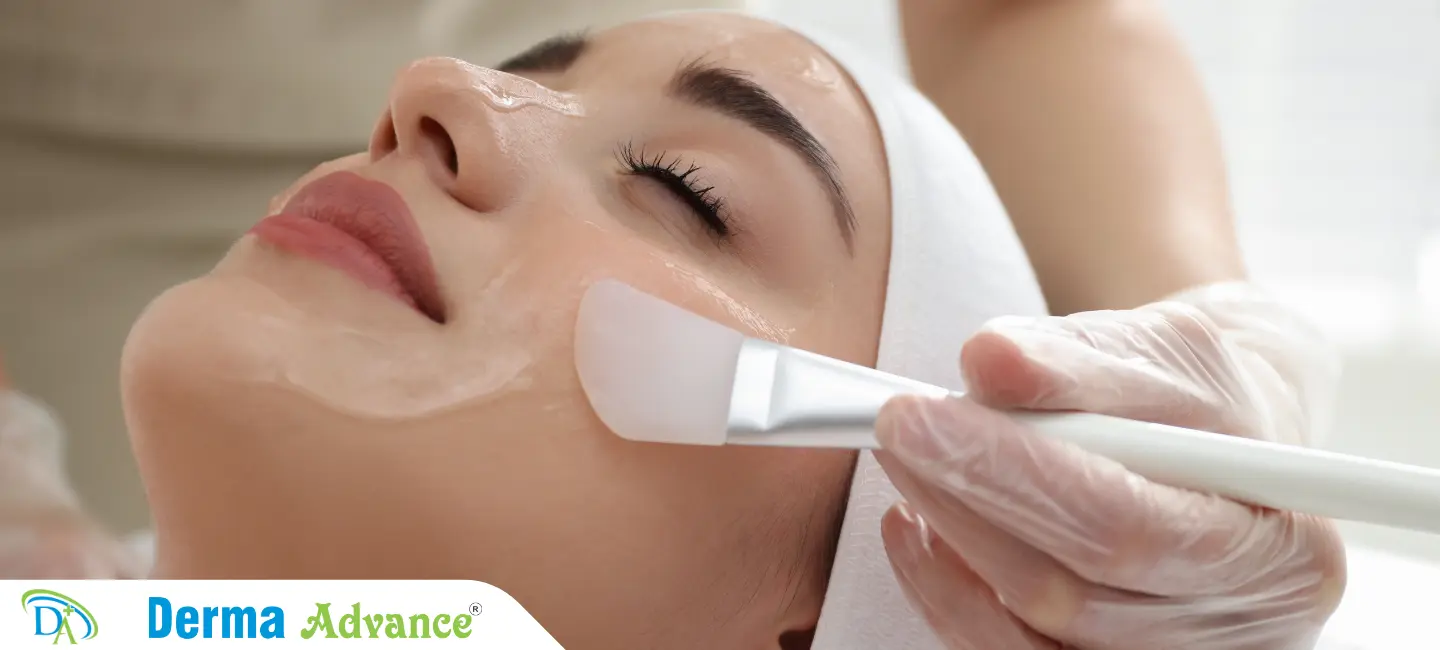What is Chemical Peels?
Chemical Peels are non-invasive treatments that use chemical solutions to exfoliate and remove dead skin layers, revealing smoother and younger-looking skin.
Chemical Peels involve the application of a chemical solution to the skin, which causes it to exfoliate and eventually peel off. This process helps in removing damaged outer layers of skin, promoting the growth of new, healthier skin cells. Chemical Peels can effectively treat a variety of skin issues, including acne scars, pigmentation, fine lines, and uneven skin texture.
The procedure is customizable based on the skin's needs and the severity of the skin condition. Different types of peels, such as superficial, medium, and deep peels, target specific skin concerns. The treatment provides visible results in improving skin clarity and smoothness, making it a popular choice for those looking to enhance their complexion and address specific skin issues.
Expert Care
Modern Technology
Chemical Peels Treatment Process
How Chemical Peels Works?
The Chemical Peel treatment starts with a thorough cleansing of the skin to remove any dirt and oils. A chemical solution, tailored to the patient's skin type and concerns, is then applied to the skin. This solution penetrates the outer layers of the skin, causing controlled damage that leads to the shedding of dead skin cells. The depth of the peel and the type of solution used depend on the desired outcome and the skin condition being treated.
The solution remains on the skin for a specific amount of time, depending on the type of peel and the patient’s skin sensitivity. Patients may experience a mild tingling or stinging sensation during this time. The treated skin will start to peel off over the next few days, revealing fresh, new skin underneath. The peeling process varies, with superficial peels causing minimal flaking and deeper peels leading to more significant peeling and a longer recovery time.
After the treatment, the skin will be sensitive and requires careful post-treatment care. It’s crucial to keep the skin hydrated and protected from sun exposure to prevent complications and ensure optimal healing. Patients are typically advised to use gentle skincare products and avoid activities that may irritate the skin. Regular follow-up sessions can enhance the results and maintain the skin's health and appearance.
Step 1: Initial Consultation and Skin Assessment
The treatment begins with an in-depth consultation where the dermatologist evaluates the patient’s skin type, issues, and treatment goals to recommend the most suitable type of chemical peel.
Step 2: Skin Preparation
The skin is thoroughly cleansed to remove any impurities and oils. A pre-peel solution may be applied to prepare the skin for the chemical peel and ensure even penetration of the peeling solution.
Step 3: Application of Chemical Solution
A customized chemical solution is carefully applied to the skin. The type of solution and duration of application depend on the desired depth of the peel and the skin’s condition.
Step 4: Neutralization and Removal
After the solution has been left on the skin for the appropriate time, it is neutralized and removed. This step helps to halt the chemical reaction and start the healing process.
Step 5: Post-Peel Care
A soothing ointment or moisturizer is applied to calm the skin and promote healing. Patients receive detailed instructions on how to care for their skin in the days following the peel.
Step 6: Follow-Up and Maintenance
Follow-up appointments are scheduled to monitor the healing process and assess the results. Maintenance treatments and regular skincare routines are recommended to sustain the benefits of the chemical peel.
Benefits of Chemical Peels
1
Improved Skin Texture
Chemical Peels exfoliate the skin, removing dead cells and promoting the growth of new, smoother skin, resulting in a more even and refined texture.
2
Reduction of Acne and Scars
This treatment effectively reduces acne and minimizes the appearance of acne scars by exfoliating the outer layers of skin and unclogging pores.
3
Diminished Fine Lines and Wrinkles
By stimulating collagen production and removing damaged skin, Chemical Peels help to reduce the appearance of fine lines and wrinkles, promoting a more youthful complexion.
4
Enhanced Skin Tone and Clarity
Chemical Peels improve skin clarity and tone by addressing issues like hyperpigmentation and uneven skin tone, resulting in a brighter and more radiant appearance.
5
Customizable for Various Skin Concerns
The treatment can be tailored to address a variety of skin issues, from superficial blemishes to deeper skin concerns, making it suitable for different skin types and needs.
6
Minimal Downtime
Depending on the depth of the peel, the recovery time is minimal, allowing patients to quickly return to their daily activities while enjoying improved skin health and appearance.
Book Your Appointment
Book Your Chemical Peels Now!
Meet Our Doctors and Expert Chemical Peels Specialist




